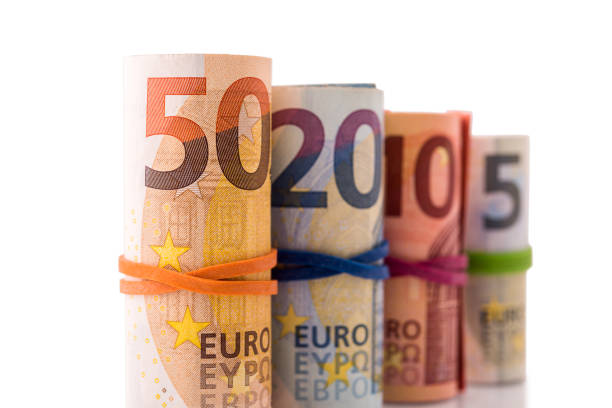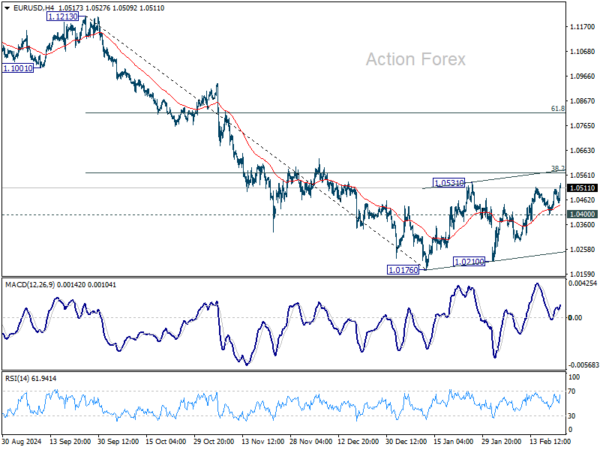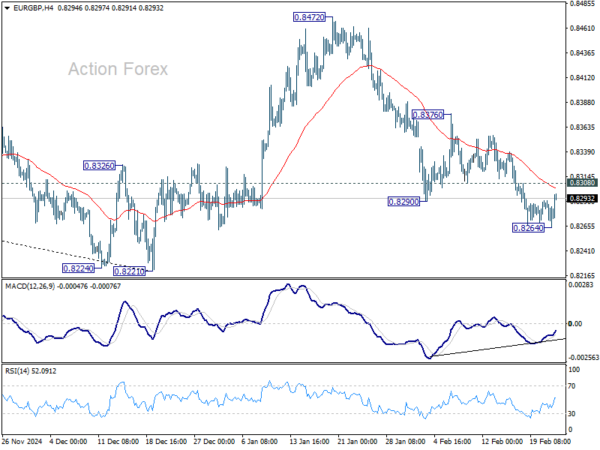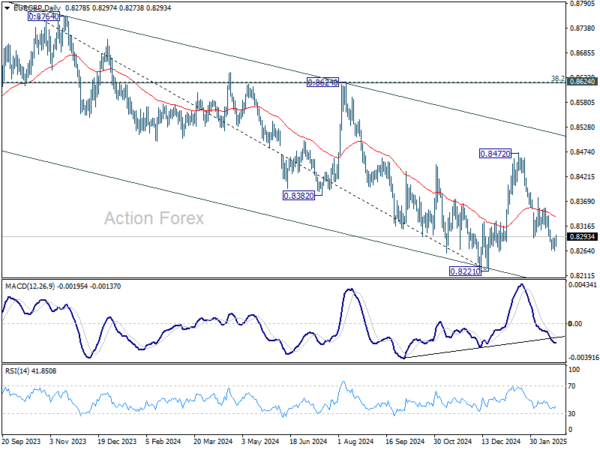Euro opened the week slightly higher against all major currencies, as traders reacted positively to the German election results. Conservatives CDU/CSU secured victory, setting Friedrich Merz up as the next chancellor. However, Euro’s gains remain limited, as uncertainty over coalition talks persists, with negotiations potentially dragging on until Easter.
While Merz’s CDU/CSU emerged as the largest party, winning 28.5% of the vote, it was far from a decisive mandate, leaving him in a weakened position for coalition negotiations.
The far-right AfD secured second place, marking its best-ever result. However, Merz has ruled out coalition talks with AfD, meaning a broader, more traditional coalition will be needed.
It remains unclear whether Merz will require one or two partners to form a government. Given the complexity of the negotiations, analysts expect haggling could last until Easter, prolonging political uncertainty in Europe’s largest economy.
For now, Euro is the best-performing currency of the day so far, followed by Aussie and Sterling. On the other hand, Dollar is the weakest performer, followed by Yen and Swiss Franc, indicating a mild risk-on market sentiment. Kiwi and Loonie are trading in the middle of the pack.
Looking ahead, market focus will shift back to economic data, particularly Tuesday’s US Conference Board consumer confidence report. While markets still weighing tariff concerns and geopolitics, the US consumer outlook could be more important for setting the near-term tone for forex markets and broader risk sentiment.
Technically, EUR/USD’s outlook is unchanged with today’s mild bounce. Price actions from 1.0176 are seen as a corrective pattern only. Fall from 1.1213 is expected to continue as long as 38.2% retracement of 1.1213 to 1.0176 at 1.0572 holds. Break of 1.0400 support will suggest that the correction has completed and bring retest of 1.0176 low.
In Asia, at the time of writing, Hong Kong HSI is down -0.55%. China Shanghai SSE is down -0.11%. Singapore Strait Times is up 0.31%. Japan is on holiday.
New Zealand retail sales rises 0.9% qoq in Q4, ex-auto sales jumps 1.4% qoq
New Zealand’s Q4 retail sales volume rose 0.9% qoq to NZD 25B, surpassing expectations of 0.6% qoq. Excluding autos, sales jumped 1.4% qoq, well above the 0.3% qoq forecast.
Sales volume growth was broad-based, with 10 of 15 industries posting gains. The largest increases came from electrical and electronic goods (+5.1%), department stores (+4.2%), and accommodation (+7.6%). Meanwhile, food and beverage services rose 2.3%, but pharmaceutical and other retailing declined -3.4%.
Retail sales value climbed 1.4% qoq to NZD 30B, with 11 of 15 sectors reporting gains. Price effects were evident, particularly in accommodation (+11%), food and beverage services (+3.3%), and department stores (+2.9%).
ECB’s Escriva advises caution; Villeroy sees rate at 2% by summer
Spanish ECB Governing Council member Jose Luis Escriva stressed caution in an interview published Sunday, highlighting uncertainty in the economic outlook. He stated that it is “very difficult to gauge the impact of events that are unfolding”, emphasizing the need to “wait for doubts around certain issues to be cleared” before making monetary policy adjustments.
Escriva reinforced ECB’s meeting-by-meeting approach, stating there “isn’t a pre-established future path for interest rates.” He also noted that Eurozone demand remains weak, with “notable differences among countries.”
Separately, French ECB Governing Council member Francois Villeroy de Galhau offered a more direct outlook on interest rate, stating that “seen from where we are today, we could be at 2% by the coming summer.”
US consumer confidence, ECB accounts, and inflation reads
US consumers came into sharp focus last week, with deteriorating U of Michigan sentiment triggering a late selloff in stock markets. This week, the Conference Board’s consumer confidence report will be a key data point, as investors will be watching for any further signs of consumer strain.
Additionally, the personal income and outlays report, including PCE inflation data, will be closely watched—particularly the core inflation trend, which is Fed’s preferred gauge of price pressures. While Fed is unlikely to cut rates at its next two meetings barring a major shock, traders remain divided between June and July for the first rate cut, making incoming data critical in shaping expectations.
In Europe, ECB’s meeting accounts will be a major focus, though they are unlikely to change the bank’s current message of gradual easing. German Ifo business climate index and Gfk consumer sentiment survey will also provide insights into economic conditions in Europe’s largest economy. However, these releases will likely take a backseat to the outcome of Germany’s weekend elections, as coalition government negotiations could have a more immediate impact on market sentiment.
Beyond the US and Europe, a range of regional economic data will also be in focus, including Australia’s monthly CPI, Japan’s Tokyo CPI, and Swiss GDP.
While Australian monthly CPI release lacks the depth of the quarterly inflation report that the RBA relies on for policy decisions, it will still offer important clues on inflation trends and could influence rate-cut expectations.
Similarly, Japan’s Tokyo CPI serves as a leading indicator for the broader national inflation trend. However, it remains insufficient to shift BoJ policy stance, as the central bank is expected to wait for the results of the Shunto wage negotiations before considering its next move.
Here are some highlights for the week:
- Monday: New Zealand retail sales; Germany Ifo business climate; Eurozone CPI final.
- Tuesday: Japan corporate service price index; Germany GDP final; US house price index, consumer confidence.
- Wednesday: Australia monthly CPI; Germany Gfk consumer sentiment; US new home sales.
- Thursday: New Zealand ANZ business confidence; Swiss GDP; Eurozone M3 monthly supply; ECB meeting accounts; US GDP revision, jobless claims, durable goods orders, pending home sales.
- Friday: Japan Tokyo CPI, industrial production, retail sales; Germany import prices, retail sales, unemployment, CPI flash; Swiss retail sales, KOF economic barometer; Canada GDP; US personal income and spending, PCE inflation, goods trade balance.
EUR/GBP Daily Outlook
Daily Pivots: (S1) 0.8266; (P) 0.8279; (R1) 0.8293; More…
Intraday bias in EUR/GBP is turned neutral first with current recovery. Another fall is expected as long as 0.8308 minor resistance holds. Below 0.8264 will resume the whole decline from 0.8472 to retest 0.8221 low. Nevertheless, firm break of 0.8308 minor resistance will turn bias back to the upside for stronger rebound to 0.8376 resistance instead.
In the bigger picture, the medium term down trend remains intact with EUR/GBP staying well inside the falling channel. Prior rejection by 55 W EMA (now at 0.8431) also affirm bearishness. Decisive break of 0.8201/8221 support zone will resume whole down trend from 0.9449 (2020 high) and carry larger bearish implications.



